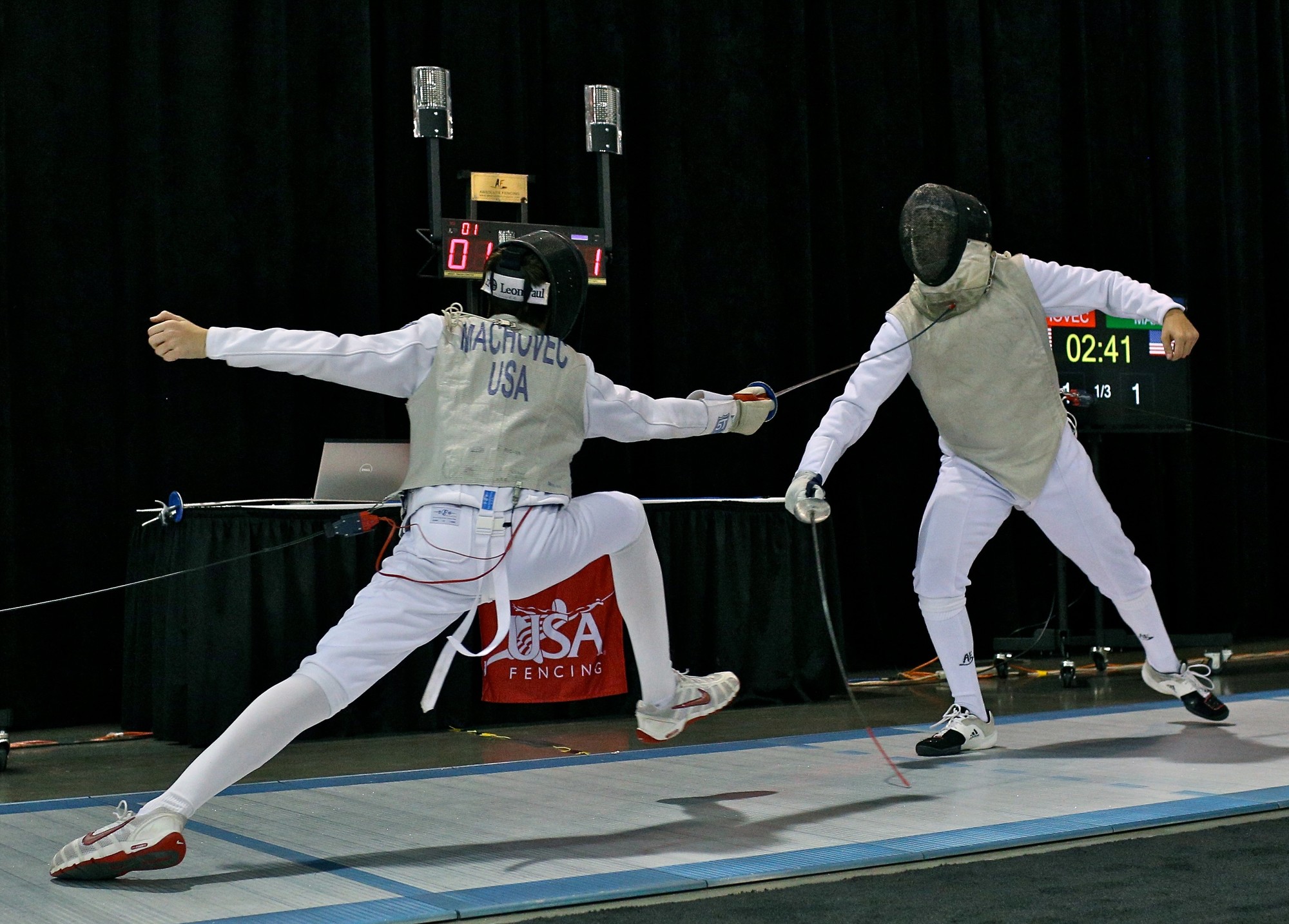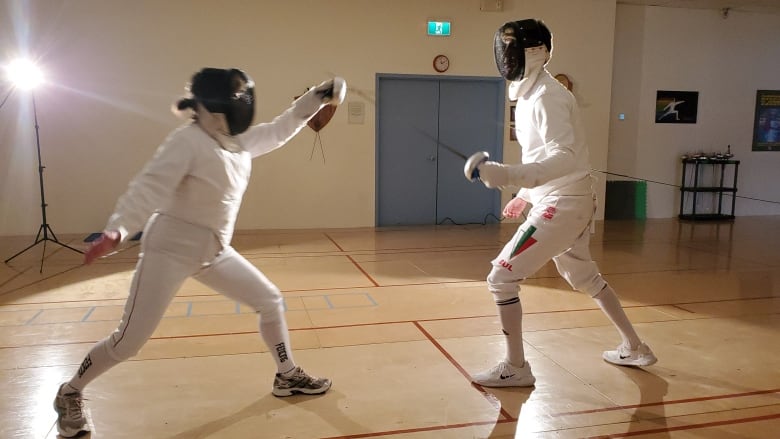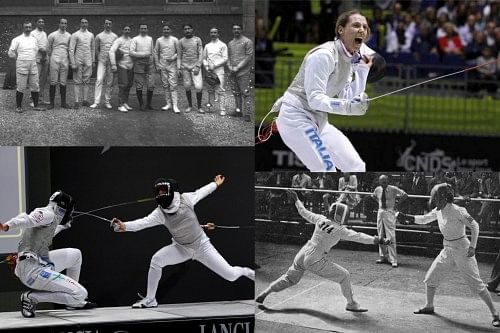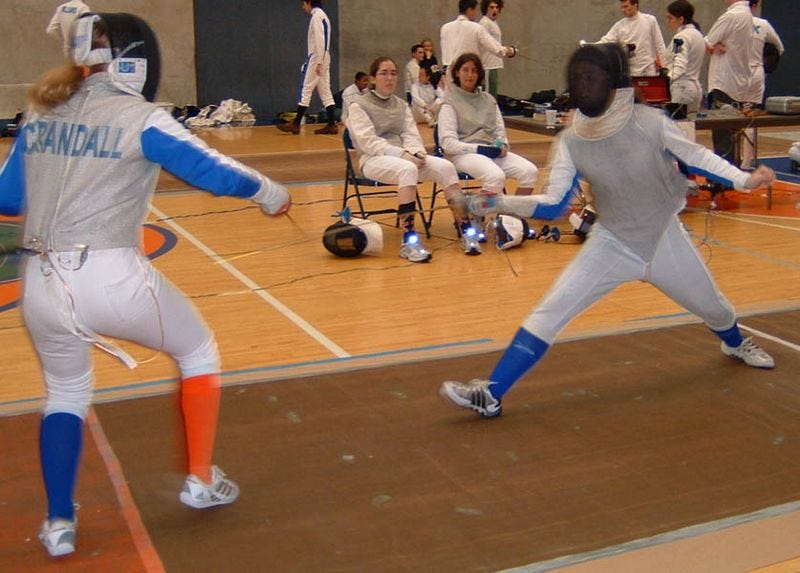Fencing is a sport that requires not only physical agility and strength, but also mental focus and strategy. One of the most important aspects of fencing is the en garde position, which is the starting stance for all fencers. It may seem like a simple position, but mastering it can greatly improve your overall performance in fencing. In this blog post, we will delve into the world of fencing en garde and discuss everything you need to know to become a master at it.
Fencing En Garde: What You Need to Know

Before we dive into the techniques and drills for mastering fencing en garde, let’s first understand what it is and why it is so important in fencing.
The en garde position is the starting stance for all fencers. It is the foundation of all movements and attacks in fencing. The word “en garde” is French for “on guard”, and it refers to the readiness and alertness that a fencer must have while in this position.
In fencing, there are three main weapons: foil, epee, and sabre. Each weapon has its own specific en garde position, but they all share some common elements. These include:
- Feet shoulder-width apart
- Knees slightly bent
- Hips facing forward
- Non-dominant arm extended behind the body
- Dominant arm extended in front of the body with the weapon pointing towards the opponent’s target area
The en garde position is not just a static stance, but rather a dynamic one. It allows for quick movements and changes in direction, making it an essential skill for any fencer.
Mastering the Basics of Fencing En Garde

To become a master at fencing en garde, you must first master the basics. This includes understanding the correct posture, balance, and alignment in the en garde position.
Correct Posture
The first step to mastering fencing en garde is to have correct posture. This means keeping your back straight, shoulders relaxed, and head up. Your weight should be evenly distributed on both feet, with your heels slightly lifted off the ground.
It is important to maintain a strong core while in the en garde position. This will not only help with balance and stability, but also with generating power for attacks.
Balance and Alignment
Balance and alignment are crucial in fencing en garde. Your body should be aligned in a straight line from your head to your toes. Your weight should be centered between your feet, with your dominant foot slightly ahead of your non-dominant foot.
To maintain balance, it is important to keep your knees slightly bent and your weight on the balls of your feet. This will allow you to quickly move in any direction without losing your balance.
The Importance of Proper Footwork in Fencing En Garde

Now that you have mastered the basics of fencing en garde, it is time to focus on footwork. Footwork is an essential part of fencing and it plays a crucial role in maintaining a strong en garde position.
There are three main types of footwork in fencing: advance, retreat, and lunge. Each of these movements is used to create distance between you and your opponent, or to close the distance for an attack.
Advance
The advance is a forward movement where the front foot moves first, followed by the back foot. This is used to close the distance between you and your opponent. To perform an advance, push off the back foot and bring the front foot forward, making sure to keep your weight on the balls of your feet.
Retreat
The retreat is a backward movement where the back foot moves first, followed by the front foot. This is used to create distance between you and your opponent. To perform a retreat, push off the front foot and bring the back foot backwards, making sure to keep your weight on the balls of your feet.
Lunge
The lunge is an attacking movement where the fencer extends their front leg forward while keeping the back leg straight. This allows for a quick and powerful attack. To perform a lunge, push off the back foot and extend the front leg forward, making sure to keep your weight on the balls of your feet.
It is important to practice these footwork movements in combination with the en garde position to develop fluidity and speed in your movements.
Fencing En Garde Techniques for Beginners

Now that you have a good understanding of the basics of fencing en garde and footwork, let’s discuss some techniques that can help beginners improve their skills.
1. Mirror Drills
Mirror drills are a great way to improve your en garde position and footwork. This drill involves facing a partner and mirroring their movements. Start with simple movements like advancing and retreating, and then progress to more complex movements like lunges and changes in direction.
This drill not only helps with coordination and balance, but also with developing a strong en garde position.
2. Shadow Fencing
Shadow fencing is another great drill for beginners. It involves practicing footwork and attacks without a partner or opponent. This allows you to focus solely on your own movements and technique.
Start by practicing basic footwork movements and then incorporate attacks and changes in direction. This drill will help you develop muscle memory and improve your overall fencing skills.
Common Mistakes to Avoid in Fencing En Garde

As with any sport, there are common mistakes that beginners make when learning fencing en garde. Here are a few to avoid:
- Leaning too far forward: This can throw off your balance and make it difficult to move quickly.
- Standing too tall: This can make you an easy target for your opponent and also make it difficult to generate power for attacks.
- Not keeping your weight on the balls of your feet: This can slow down your movements and make it difficult to react quickly.
By being aware of these mistakes, you can work on correcting them and improving your en garde position.
How to Improve Your Fencing En Garde Stance

To improve your fencing en garde stance, it is important to practice regularly and focus on proper technique. Here are a few tips to help you improve:
- Practice in front of a mirror: This will allow you to see any mistakes in your posture or alignment.
- Use resistance bands: Resistance bands can be used to strengthen your core and leg muscles, which are essential for maintaining a strong en garde position.
- Work on your footwork: As mentioned earlier, footwork is crucial in fencing en garde. Practice different footwork drills to improve your speed and agility.
Remember to always focus on proper technique and form while practicing. This will help you develop good habits and improve your overall performance.
The Role of Mindset in Fencing En Garde
Fencing is not just a physical sport, but also a mental one. Your mindset can greatly affect your performance in fencing en garde. Here are some tips to help you develop a strong mindset for fencing:
- Stay focused: It is important to stay focused and alert while in the en garde position. This will allow you to react quickly to your opponent’s movements.
- Be confident: Confidence is key in fencing. Believe in yourself and your abilities, and trust in your training.
- Learn from mistakes: Fencing is a sport that requires constant learning and improvement. Don’t get discouraged by mistakes, but rather use them as opportunities to learn and grow.
By developing a strong mindset, you can improve your performance in fencing en garde and in the sport as a whole.
Fencing En Garde Drills to Enhance Your Skills
To take your fencing en garde skills to the next level, here are some drills that you can incorporate into your training:
1. Reaction Drill
This drill involves having a partner randomly call out “advance”, “retreat”, or “lunge” and you must react accordingly. This will help you improve your reaction time and footwork.
2. Target Practice
Set up targets on a wall or use a target dummy and practice hitting them with your weapon while maintaining the en garde position. This will help improve your accuracy and control.
3. Partner Footwork Drill
In this drill, you and a partner will face each other in the en garde position and take turns leading with different footwork movements. This will help improve coordination and balance.
Remember to always focus on proper technique and form while doing these drills. Quality over quantity is key in improving your fencing en garde skills.
Understanding the Different Types of Fencing En Garde
As mentioned earlier, there are three main weapons in fencing: foil, epee, and sabre. Each weapon has its own specific en garde position. Here are the differences between them:
- Foil: In foil fencing, the en garde position is more upright and the weapon is held at a 45-degree angle towards the opponent’s target area.
- Epee: The en garde position in epee fencing is similar to foil, but the weapon is held at a 90-degree angle towards the opponent’s target area.
- Sabre: The en garde position in sabre fencing is lower and more crouched, with the weapon pointing towards the opponent’s entire upper body.
It is important to understand the differences between these positions and practice them accordingly if you are training in multiple weapons.
Tips for Maintaining a Strong Fencing En Garde Position
To maintain a strong fencing en garde position, here are some tips to keep in mind:
- Keep your weight on the balls of your feet.
- Maintain a strong core and straight back.
- Stay relaxed and avoid tension in your shoulders and arms.
- Practice regularly and focus on proper technique.
By following these tips, you can ensure that you have a strong and effective en garde position in every fencing match.
Conclusion
Fencing en garde is a fundamental aspect of the sport and mastering it can greatly improve your overall performance. By understanding the basics, focusing on proper footwork, avoiding common mistakes, and developing a strong mindset, you can become a master at fencing en garde. Remember to always practice with proper technique and form, and never stop learning and improving. With dedication and hard work, you can take your fencing skills to new heights.